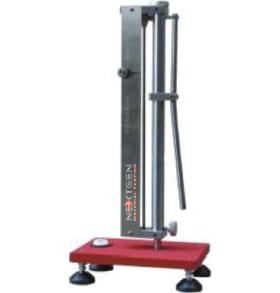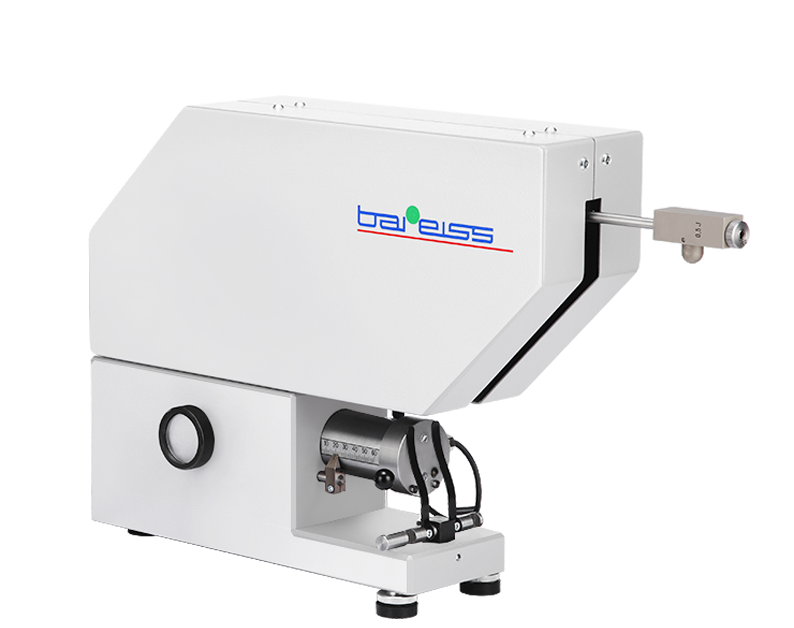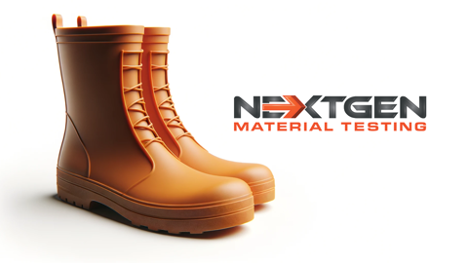Rubber and, thus, rubber testing, have become widespread in the modern world. Rubber demand is continually growing, with the International Rubber Study Group forecasting a rebound of 2.6% in 2023, reaching an estimated 30.64 million tonnes. Look around, and you will likely find it everywhere – from the seals in our refrigerators and the legs of our chairs to the soles of our shoes. But have you ever noticed that not all rubber is the same? It is a curious observation: rubber varies significantly in its properties and applications.
This variation is by design. Each type of rubber is engineered for specific purposes. For instance, the rubber used in fitness balls is designed to be soft and pliable, whereas the rubber used for electrical wire insulation is thick and highly resilient. Thus, there exists an array of rubber types, each suited to diverse applications. Choosing the correct rubber type for each situation is essential. One of the most significant factors in this selection is rubber’s resilience. While a mistake in some cases might have insignificant consequences, in others, it could be catastrophic.
This brings us to the heart of today’s article: the introduction of a tool specially crafted for rubber resilience testing. We present to you our Vertical Rebound Resilience Tester – GenRebound, along with its main features and advantages. We will also discuss in which cases this tool excels and analyze the general use of rubber to understand where rubber resilience matters in choosing the right type of rubber.
What is a Rebound Resilience Tester
We must first understand what rebound resilience testers are and their significance in material science and quality assurance labs before we can go into the main topic of this article. A rebound resilience tester is used for evaluating the elastic properties of different materials, particularly rubber and elastomers.
These testers assess how well a material can revert to its original shape after experiencing compressive force. Product performance and safety are directly affected by material elasticity and durability. Such testers provide valuable insight into a material’s resilience by dropping a known weight and measuring how high it rebounds on a material sample.
The use of rebound resilience testers is widespread in many industries. For example, they are used to test the durability and shock-absorbing capabilities of tire and gasket materials in the automotive industry. Rubber balls and mats are also tested using these testers in the sports equipment industry. Furthermore, they play a crucial role in the production of consumer goods such as footwear and household appliances that require durability and comfort.
Rebound resilience tests provide precise measurements of a material’s resilience, including rebound height and percentage. This data is invaluable in research and development labs for developing high-tech materials. It is also invaluable in quality control processes to verify product consistency, and in regulatory compliance to meet industry standards such as ASTM D3574 and ISO 8307.
Rebound resilience testers are typically used in material development, quality assurance, and product testing laboratories. Automotive testing labs, consumer product development facilities, and academic research institutions require an understanding of material properties under dynamic conditions.
Significance of Different Rubber Types in Rebound Resilience
Rubber type affects materials’ rebound resilience. Different types of rubber exhibit distinct properties that affect their ability to withstand compression forces and return to their original shape after being compressed.
Natural rubber, derived from rubber trees’ latex, has exceptional elasticity and resilience. Its high rebound resilience makes it suitable for applications requiring elasticity, such as automotive tires and sports equipment. On the other hand, synthetic rubbers are engineered to meet specific performance requirements. Conveyor belts and footwear commonly use styrene-butadiene rubber (SBR) because of its excellent abrasion resistance.
Standardized testing methods can be used to determine differences in rebound resilience between rubber types. A pendulum-type tester can be used to determine the rebound resilience of vulcanized rubber, for example, according to ASTM D2632. A numerical value reflects the material’s ability to recover from deformation, allowing manufacturers to compare the performance of different rubber formulations.
Vehicle dynamics and ride comfort are directly influenced by the rebound resilience of rubber components in automotive engineering. Vibration dampening and noise isolation can be affected by the rubber compound used in suspension bushings and engine mounts. As in the construction industry, rubber seals and gaskets’ rebound resilience determines their effectiveness in preventing water ingress and air leaks.
Further, elastomers designed for specific applications have been developed as a result of advances in rubber-compounding technology. In roofing membranes and automotive seals, ethylene-propylene-diene monomer (EPDM) rubber is prized for its excellent weather resistance.
Introducing the Vertical Rebound Resilience Tester – GenRebound
We present to you the Digital Ball Rebound Resilience Tester, an advanced instrument designed to meet and exceed all of these testing requirements. For industries seeking to ensure their materials will withstand the rigors of use and time, a tester like this is a necessity.
Our Ball Rebound Tester complies with ASTM D3574 and ISO 8307. An advanced electronic console measures and analyzes the rebound of a 16mm magnetic ball dropped from a height of 500mm onto a material sample. A clear, quantifiable insight into the material’s resilience is provided by displaying not only the measured value but also the proportion of the average value in percentage.
Standards must be followed at all times. Through its meticulous design and operation, the GenRebound tester embodies these benchmarks to ensure consistency and reliability in material testing. We will explore these standards in more detail later in this article, highlighting their significance.
GenRebound stands at the forefront of material testing technology, making it an ideal choice for your testing needs. Due to its ability to automatically return the ball to its starting position post-test, it guarantees efficiency and repeatability in measurements, a critical factor in research and quality assurance. For industries dedicated to product advancement and reliability, this feature, among others, positions the GenRebound not just as a tool, but as an indispensable asset.
In the next part, we will look at its features, and you will see why it is worth investing in this tool.
Features of the Rebound Resilience Tester – GenRebound
Featuring a number of features, the Rebound Resilience Tester – GenRebound is an excellent choice for testing the resilience of various materials. In the field of material science and quality assurance, this machine offers a comprehensive solution designed with precision and user convenience in mind.
With its plug-and-play system, GenRebound provides a straightforward setup process, allowing users to get started with their testing procedures without extensive preparation or technical expertise. There is a pressing need for time in fast-paced lab environments.
In addition to its operational efficiency, the tester is extremely easy to use. No matter if you are a seasoned professional or brand new to material testing, the intuitive design and clear instructions make testing easier and reduce the learning curve.
With the short measuring cycle feature, testers can perform assessments swiftly, a critical feature in high-volume testing situations. The efficiency does not sacrifice accuracy for speed, providing reliable results in a fraction of the time of other testing methods.
The GenRebound’s USB port facilitates easy data transfer, making it easy to export test results for further analysis or to include them in reports. Through this connectivity, data can be easily integrated into existing systems for comprehensive analysis.
A four-line LCDs the test cycle, measured values, median value in percentage, and operating instructions, among others. It allows real-time analysis and monitoring of tests, contributing to better decision-making.
A major advantage of the GenRebound is that it does not require calibration. With this feature, downtime and maintenance are minimized, ensuring the tester is always ready to use. A leap forward in testing efficiency, it allows laboratories to concentrate on their core activities without interruptions from routine calibrations.
Getting to Know Standards: ASTM D3574 and ISO 8307
We cannot understate the importance of adhering to standards in material testing. The GenRebound tester is innovative and compliant with ASTM D 3574 and ISO 8307, making it applicable across a range of industries. For accurate results, these standards guide us in selecting the right testing methodology for determining the resistance of materials. In order to better understand them, let’s take a closer look at them:
ASTM D3574 Standard
Urethane foams like slab, bonded, and molded are tested under ASTM D3574 to verify that they meet their physical properties. Data can be collected uniformly for an array of applications, including research, quality control, and compliance with specifications. Standard tests address a variety of material characteristics, ensuring that data is relevant to specific test conditions without guaranteeing identical performance in every application. GenRebound complies with this standard, offering precise measurement capabilities for materials within its scope, facilitating accurate evaluation of urethane foams in terms of resilience.
ISO 8307 Standard
Using a ball rebound test, ISO 8307 specifies the method for determining the resilience of flexible cellular polymeric materials. From packaging to cushioning in consumer products, this standard is necessary for evaluating the performance of materials like expanded polystyrene and polyurethane foam. A GenRebound tester complies with ISO 8307, providing accurate material resilience measurement by measuring the height at which a ball bounces after impacting the material.
Technical Specifications of the Digital Ball Rebound Resilience Tester
To get a better understanding of the technical specifications of the Digital Ball Rebound Resilience Tester, below is a breakdown laid out for your convenience:
-
Drop Distance of Steel Balls: Conforming to ISO 8307 and ASTM D357 standards, the tester features a precise drop height of 500mm. For GB/T6670 standards, it adjusts to 460±0.5%mm, showcasing its adaptability to different testing requirements.
-
Diameter and Quality of Steel Ball: The meticulously crafted steel ball, with a diameter of Ф16-0.1mm and a weight of 16.7g, ensures uniform impact force.
-
Accuracy of Rebound Rate: The rebound rate of the falling ball can be accurately calculated with an accuracy of less than 1.5%.
-
Sample Size Compatibility: Designed to accommodate samples measuring 100mm×100mm×50mm, it offers flexibility in terms of material types and densities.
-
Power Supply Requirements: Operating on a standard 1∮, AC220V/50HZ power supply, it permits easy integration into laboratory settings without specialized power arrangements.
Exploring Analogue Ball Rebound Resilience Tester – GenRebound
In addition to our GenRebound – Digital Ball Rebound Resilience Tester, we offer another version of our testing equipment – the analog model. In contrast to the digital model, the Analogue Vertical Rebound Resilience Tester – GenRebound tests rubber compounds for resilience in a more traditional way.

As opposed to its digital counterpart, this analog version measures and records data manually. Plunger impact measurements are taken and calculated differently, focusing on the 4th and 6th impacts to determine material resilience. Specifically designed for ASTM-compliant vibration or shock absorption testing, this model is ideally suited to these applications.
Operating Process of the Analogue Ball Rebound Resilience Tester
In order to test rubber material elasticity, the Analogue Ball Rebound Resilience Tester, or heliometer, uses the vertical free-fall hammer method. The drop hammer’s elevation degree and the tester’s level are adjusted first. The test films are then positioned 14mm from the specimen’s edge. Tests one through three are disregarded, and only the average of tests four, five, and six is recorded. As a result, rubber material resilience can be assessed consistently and accurately.
Technical Specifications of the Analogue Ball Rebound Resilience Tester
Rubber material resilience can be assessed precisely using the Analogue Ball Rebound Resilience Tester. This tester has a drop height of 40 cm (15.75 inches) and a hammer weight of 28 g. With its compact dimensions of 21x15x52.5 cm (8.27×5.91×20.67 inches) and sturdy weight of 8 kg (17.64 pounds), it is ideal for all kinds of laboratory settings.
Technical Specifications:
-
Drop Height: 40 cm (15.75 inches)
-
Hammer Weight: 28 g (0.98 ounces)
-
Dimensions (W x D x H): 21x15x52.5 cm (8.27×5.91×20.67 inches)
-
Weight: 8 kg (17.64 pounds)
Industries and Applications of Rubber Resilience Testing Products
As we have previously mentioned, the GenRebound Vertical Rebound Resilience Tester is essential in several industries by verifying that rubber components meet the stringent requirements for both strength and resilience. We are going to look at a few industries and its components of rubber components that are commonly tested using equipment such as GenRebound in some of the major industries and applications:
Automotive Industry
Rubber component rebound resilience testing is a crucial step in ensuring vehicle safety, comfort, and performance. Different types of rubber seals, tires, and engine mounts undergo rigorous testing to make sure they can withstand the stresses of road use. Testing these components is essential, as the resilience of these components has a significant impact on the overall driving experience and the durability of the vehicle.
A vehicle’s handling and fuel efficiency are directly affected by the rebound resilience of the tires, perhaps the most critical rubber component. The rubber compound used in tires must have the perfect balance of elasticity and firmness to absorb road irregularities while also providing the grip necessary for safe braking and handling. Fuel consumption and emissions are directly affected by tire resilience, which affects rolling resistance. Tire manufacturers can optimize tire performance across a range of driving conditions by performing precise resilience testing.
Another vital component is engine mounts, which isolate engine vibrations from the chassis. Due to their resilience, these rubber mounts reduce vibration and noise transmission into the vehicle cabin, making driving a more comfortable experience. Furthermore, rubber seals around windows and doors must have the right resilience characteristics to prevent leaks and reduce wind noise.
Manufacturing Industry
Rubber component rebound resilience testing is an essential process in the manufacturing sector that significantly affects operational efficiency and equipment longevity. Testing guarantees that materials such as conveyor belts and vibration dampeners are resilient enough to perform their functions effectively, contributing to smooth manufacturing processes.
 As conveyor belts transport materials across production facilities, they are continuously stressed and strained. To withstand repetitive impacts, abrasions, and stretching, the rubber used in these belts must exhibit optimal rebound resilience. Resilience allows belts to maintain their functionality and integrity over time, reducing the need for frequent replacements and minimizing downtime.
As conveyor belts transport materials across production facilities, they are continuously stressed and strained. To withstand repetitive impacts, abrasions, and stretching, the rubber used in these belts must exhibit optimal rebound resilience. Resilience allows belts to maintain their functionality and integrity over time, reducing the need for frequent replacements and minimizing downtime.
Similarly, vibration dampeners, essential for reducing vibration transmission from machinery to structures (and vice versa), rely on rubber’s rebound resilience to absorb and dissipate energy. The effectiveness of these dampeners directly influences the longevity of machinery and the quality of the working environment. Using rubber materials that have been properly tested can result in more durable dampeners, which protect sensitive machinery from damage and reduce noise levels, contributing to a safer and more productive manufacturing environment.
Consumer Products
Consumer products rely on rebound resilience testing to verify the rubber components that make up many everyday items are both comfortable and functional. Performing this testing is especially important in products like athletic shoes and tools with rubber grips, where the ability of the material to return to its original shape after being compressed directly impacts performance and user satisfaction.
Athletes’ shoes are a great example of the importance of rebound resilience. During physical activities, the soles of these shoes are constantly under pressure and impact. Athletes require optimal rebound properties to provide the necessary support and shock absorption. The right rubber composition can make the difference between a shoe that enhances performance and one that causes fatigue or injury. Using rebound resilience testing, manufacturers can fine-tune the rubber compounds used in their soles to achieve the best balance between softness for comfort and firmness for energy return.
Rubber-grip tools are another area where resilience testing is essential. Soft yet firm grips are needed to cushion the user’s hands during prolonged use while providing a secure hold. Rubber resilience minimizes the risk of hand fatigue or discomfort by absorbing some vibrations generated by the tool’s operation.
Sports Equipment
Rubber materials used in a range of sporting goods are subject to rebound resilience testing in the sports equipment industry. The purpose of this type of testing is to assess how rubber components, integral to various types of sports equipment, respond to dynamic stresses. During this testing, the elastic properties of rubber are measured, which directly influence the equipment’s ability to absorb impacts, maintain structural integrity, and provide athletes with the required support and comfort.
In sports equipment manufacturing, rubber’s resilience determines how well a product can fulfill its intended function while maintaining the user’s safety. For instance, a ball’s internal pressure and ability to retain its shape after being hit or thrown are vital for its performance. As with protective gear, high-resilience rubber dissipates the energy from impacts, reducing the risk of injury.
Rubber compounds used in products can be systematically evaluated and optimized by rebound resilience testing. When developers understand how materials behave under force and their ability to return to their original shape, they can make informed decisions about material selection and product design. As a result, sports equipment not only meets the demands of athletic performance but also follows industry standards and safety regulations.
 Addition to GenRebound: The Pendulum Rebound Resilience Tester
Addition to GenRebound: The Pendulum Rebound Resilience Tester
Building on the comprehensive capabilities of the GenRebound Vertical Rebound Resilience Tester, our portfolio is further enhanced by the introduction of the Pendulum Rebound Resilience Tester. It represents a significant expansion of our rebound resilience testing suite, providing a more nuanced approach to understanding materials’ dynamic behavior under various conditions. As a testament to engineering excellence, the Pendulum Rebound Resilience Tester delivers the highest levels of accuracy and repeatability with ease.

The Pendulum Rebound Resilience Tester complies with a wide range of standards, including DIN 53512, ASTM D 1054, and ISO 4662. With both manual and fully automatic options, as well as a digital display terminal, this tester is not just a tool but a complete calibration solution. Identifying changes after aging and fatigue with unprecedented precision marks a significant advance in qualitative materials differentiation.
The Pendulum Tester is particularly useful for simulating the effects of heat on samples’ elasticity. With a heater capable of reaching temperatures up to 100 °C, it provides a unique insight into the response of different formulations to thermal stress.
Testing with the Pendulum Rebound Resilience Tester is straightforward but profoundly impactful. In a dynamic context, it measures how a material can store and release energy when subjected to shock loads. As a result of this distinction between elastic and plastic behavior, the tester is useful for assessing the resilience of elastomers, soft elastic foams, and similar materials.
Maximizing Rubber Resilience Testing with NextGen’s GenRebound Tester
NextGen Material Testing Inc.’s introduction of the GenRebound Vertical Rebound Resilience Tester marks a significant advancement in rubber testing technology, providing an analysis of rubber’s elastic properties. In industries committed to improving product quality and safety through rigorous testing, this instrument is essential.
With its precision, efficiency, and user-friendly operation, the GenRebound tester stands out from other testers. For research and development, quality control, and regulatory compliance, its ability to measure how a material returns to its original shape after compression is invaluable. Featuring a plug-and-play system, short measuring cycles, and automatic ball return, the GenRebound tester simplifies the testing process without compromising accuracy.
Natural rubber, with its high elasticity, and synthetic rubbers designed for specific resistances require different testing approaches for different applications. Combined with the analog model for vibration and shock absorption testing, the GenRebound tester provides a comprehensive solution for assessing rubber compounds’ rebound resilience. Whether rubber components are used in automotive tires, conveyor belts, sporting goods, or consumer goods, their resilience is crucial to their performance and longevity.
NextGen Material Testing Inc. provides more than just cutting-edge testing equipment. With our state-of-the-art GenRebound Vertical Rebound Resilience Tester and comprehensive testing solutions customized to your specific needs, we are your partners in achieving excellence in rubber resilience testing. The combination of our commitment to quality and our deep expertise in delivering customized testing solutions makes us your reliable ally in excellence. You can request a quote or receive personalized assistance by contacting us directly, where our specialists are ready to address your specific testing requirements and provide you with the solutions you need.
